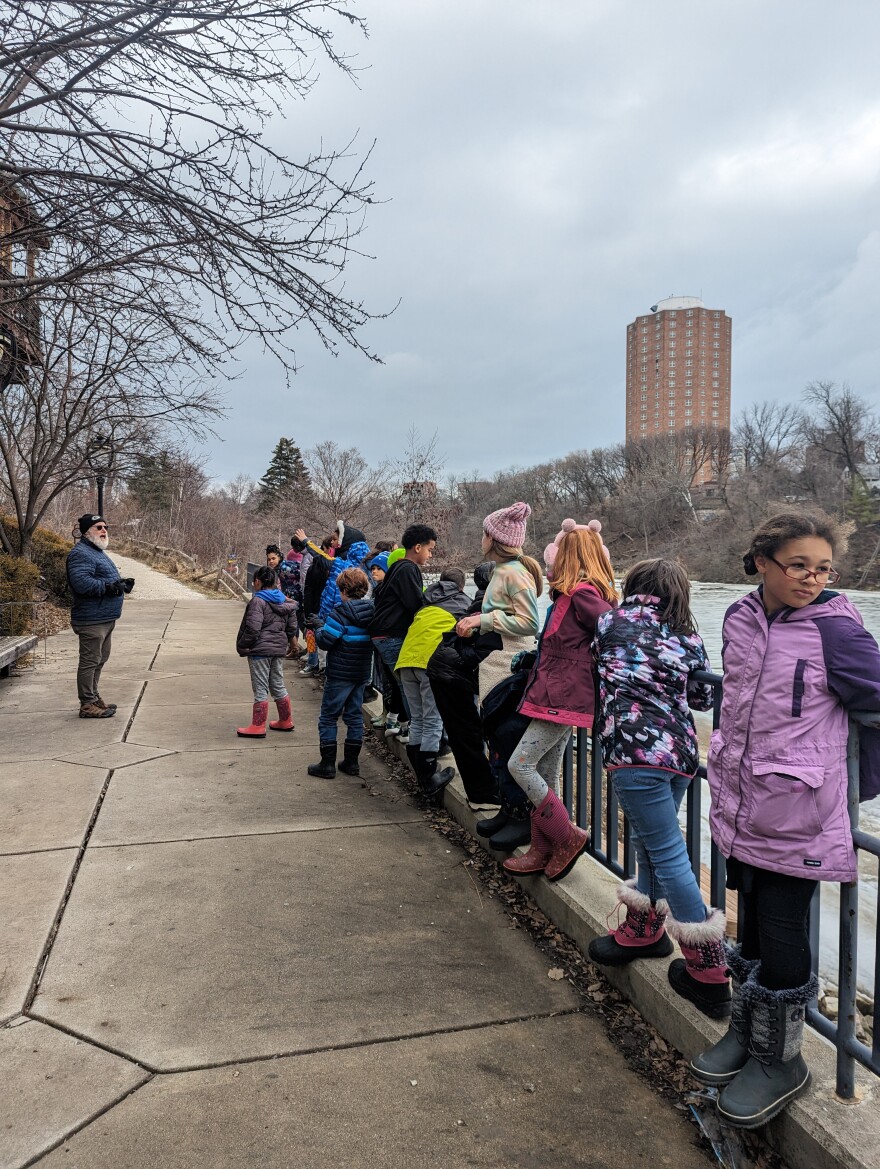It was a chilly January day when I set out for a walk with some third grade students at the Tamarack Waldorf School in Milwaukee. I walked along side the students as they wove through the east side neighborhood, a familiar path to a familiar place: Caesar’s Park on the tail end of the Milwaukee River Greenway.
The kids were bundled up, despite the relatively mild weather. They explored the icy landscape as their environmental educator Paul Jarvis, looked on and guided them forward.

For their homeroom teacher, Brandon Oaks, the winter walks are an important part of their education.
"The exposure to the cold is really good for blood circulation, it's good for waking your body up, it's good for your immune system... Experiencing the cold, experiencing the sunlight is most vital in those dark times where there isn't much of it, so you want to go out and get some while you can," says Oaks.
This emphasis on outdoor education is at the heart of Waldorf education (also known as Steiner education), according to Jarvis. Waldorf education is based on the work of Rudolph Steiner, who stressed the importance of holistic education, developing artistic, practical and intellectual skills. Teachers at Tamarack believe movement and outdoor education are both important for kids to connect to themselves and their environment. Jarvis adds that the winter can also provide some other lessons for students.
"It teaches students resilience, that things aren't always warm and sunny, and you can make that a metaphor for their lives... I also think it gives students an aesthetic of being outdoors and a norm of being outdoors," he says. "The kids really like to be outside and it makes no difference to them if it's 15 degrees or 72 degrees."






